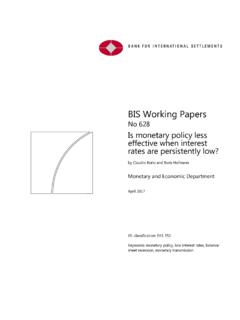Transcription of OBESITY UPDATE 2012 - OECD
1 OBESITY UPDATE 2012 The OBESITY epidemic slowed down in several OECD countries during the past three years. rates grew less than previously projected, or did not grow at all, according to new data from ten OECD countries. Child OBESITY rates also stabilised in England, France, Korea and United States. However, rates remain high and social disparities in OBESITY are unabated. Many governments have stepped up efforts to tackle the root causes of OBESITY , embracing increasingly comprehensive strategies and involving communities and key stakeholders.
2 There has been a new interest in the use of taxes on foods rich in fat and sugar, with several governments ( Denmark, Finland, France, Hungary) passing new legislation in 2011. This policy brief presents an UPDATE of analyses of trends and social disparities in OBESITY originally presented in OECD s report OBESITY and the Economics of Prevention: Fit not Fat , published in 2010. Until 1980, fewer than one in ten people were obese. Since then, rates doubled or tripled and in 19 of 34 OECD countries the majority of the population is now overweight or obese.
3 OECD projections suggest that more than two out of three people will be overweight or obese in some OECD countries by 2020. Three years on from the publication of the OECD report OBESITY and the economics of prevention: Fit not fat , rates have increased less than, or in line with, projections in most countries for which new data have become available. The data provide strong evidence that the progression of the epidemic has effectively come to a halt for the past ten years in countries such as Korea (where OBESITY rates have stabilised at 3-4%), Switzerland (7-8%), Italy (8-9%), Hungary (17-18%) and England (22-23%).
4 There is, however, no sign of retrenchment of the epidemic, in any country. rates remain very high in most of the OECD, and countries continue to experience a large burden from chronic diseases associated with OBESITY . The latest data show modest increases in OBESITY over the past decade in countries like Spain and France, in the order of 2-3%, and larger increases in Ireland, Canada and the United States (4-5%), although an even larger increase had been expected in the United States, based on previous OECD projections.
5 These findings would seem to contradict the argument that economic recession might fuel OBESITY by making people s diets less healthy. Figures 1 and 2 illustrate the progression of OBESITY and overweight rates , respectively, in seven OECD countries, along with previous OECD projections (dotted lines) for overweight. The prevalence of OBESITY today varies nearly tenfold among OECD countries, from a low of 4% in Japan and Korea, to 30% or more in the United States and Mexico. Current OBESITY rates in all OECD countries are shown in an appendix to this document.
6 Height and weight have been increasing since the 18th century, as income, education and living conditions gradually improved over time. While weight gains were largely beneficial to the health and longevity of our ancestors, an alarming number of people have now crossed the line beyond which further gains are dangerous. Severely obese people die 8-10 years sooner than those of normal-weight, similar to smokers, with every 15 extra kilograms increasing risk of early death by approximately 30%.
7 OBESITY is estimated to be responsible for 1% to 3% of total health expenditure in most countries (5% to 10% in the United States) and costs will rise rapidly in coming years as OBESITY -related diseases set in. 2 Figure 1. OBESITY rates 0%5%10%15%20%25%30%35%197019751980198519 901995200020052010 Rate of obesityYearUSAE nglandSpainFranceCanadaKoreaItalySwitzer landIrelandHungary Figure 2. Overweight rates 25%30%35%40%45%50%55%60%65%70%75%1970198 01990200020102020 Rate of overweightYearUSAE nglandSpainFranceCanadaKoreaItaly---Past projectionNew data points Child OBESITY New data on child OBESITY from four OECD countries (England, France, Korea and United States) confirm and possibly strengthen the message emerging from analyses of adult OBESITY .
8 rates evolved according to previous OECD projections or, more often, below those projections, in all four countries. Child OBESITY rates have effectively remained stable (at 6-8%) over the past 20 years in France. The same is true in the other three countries during the past ten years, although with some fluctuations in the United States (Figure 3). However, for child OBESITY as well as adult OBESITY , there is no clear sign of retrenchment of the epidemic, despite major policy efforts focused on children in some of the countries concerned.
9 Figure 3. Child OBESITY , United States 0%10%20%30%40%50%60%19901995200020052010 20152020 Rate of OBESITY and overweightYearPast OECD 2010 projections and new survey data point for 2009 Boys obesityGirls obesityBoys overweightGirls overweight Estimates of the prevalence of overweight (including OBESITY ) in OECD and emerging countries among school-aged children aged 5-17 years, collated by the International Association for the Study of OBESITY , are available in an appendix to this document. One-in-five children are affected by excess body weight across all countries, and in Greece, the United States and Italy the figure is closer to one third.
10 Only in China, Korea and Turkey are 10% or less of children overweight. In most countries, boys have higher rates of overweight and OBESITY than do girls. Girls tend to have higher rates in Nordic countries (Sweden, Norway, Denmark), as well as in the United Kingdom, the Netherlands and Australia. Social disparities in OBESITY Women are more often obese than men, but male OBESITY rates have been growing faster than female rates in most OECD countries. OBESITY is more common among the poor and the less educated.
















